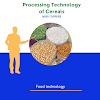Cleaning Compounds
Cleaning compound requirements vary according to the area and equipment to be cleaned. The selection of compounds for blending, to form a satisfactory cleaner, requires specialized and technical knowledge. Major considerations in cleaning com-pound selection are the nature of the soil to be cleaned, water characteristics, application method, and area and kind of equipment to be cleaned.
Chemical Characteristics
Potential contamination sources from chemicals that can be found in foods are those used in food production and food preparation areas, and they include cleaning compounds, sanitizers, insecticides, rodenticides, and air fresheners. These substances may contaminate equipment, utensils, or surfaces, serving as a vehicle for transfer of the contaminants to food. This statement can be verified through those who have drunk from a glass or cup that imparts a distinct taste of dishwash-ing soap. Insecticides, rodenticides, air fresheners, and deodorizers may accidentally contaminate foods if applied by a spray or vapor. This can be prevented by use of a paint or solid insecticide or pesticide. Other potential chemical contaminants could be particulate rather than soluble chemicals.
Physical Characteristics
Soil is material in an incorrect location. It consists of dirt and dust materials with dis-crete particles in three dimensions, organic materials with discrete particles in three dimensions, and organic materials that could be encountered in a foodservice or processing facility. Examples of soil are fat depositon a cutting board, lubricant deposits on a moving conveyor belt, and other organic deposits on processing equipment.
Soils can be classified according to the method of removal from the object to be
cleaned:oils soluble in water (or other solvents) containing no cleaner: These soils will dissolve in tap water and in other solvents that do not contain a cleaning compound. They include many inorganic salts, sugars, starches, and minerals. Soils of this type present no technical problem because their removal is merely a dissolving action.Soils soluble in a cleaning solution that con-tains a solubilizer or detergent: Acid-soluble soils are soluble in acidic solutions with a pH below 7.0. Deposits include films of oxidized iron (rust), zinc carbonates, calcium oxalates, metal oxides (iron and zinc) on stainless steel, waterstone (reaction between various alkaline cleaners and chemical constituents of water having noncarbonate hardness), hard-water scale (calcium and magnesium carbonates), and milkstone (a waterstone and milk film interaction, precipitated by heat on a metal surface). Alkali-soluble soils are basic media with a pH above 7.0 Soils insoluble in the cleaning solution: These soils are insoluble throughout the range of normal cleaning solutions. How-ever, they must be loosened from the surface on which they are attached and subsequently suspended in the cleaning media.
EFFECTS OF SURFACE CHARACTERISTICS ON SOIL DEPOSITION
Surface characteristics should be considered when selecting a cleaning compound and cleaning method Clearly, the equipment and building material used, affects soil deposition and cleaning requirements.Sanitation specialists should be thoroughly familiar with all finishes used on equipment and areas in the food facility and should know which cleaning chemicals will attack surfaces. If the local management team is unfamiliar with the cleaning com-pounds and surface finishes, a consultant or reputable supplier of cleaning compounds should be sought to provide technical assistance, including recommending chemicals and sanitation procedures















0 Comments
Send feedback